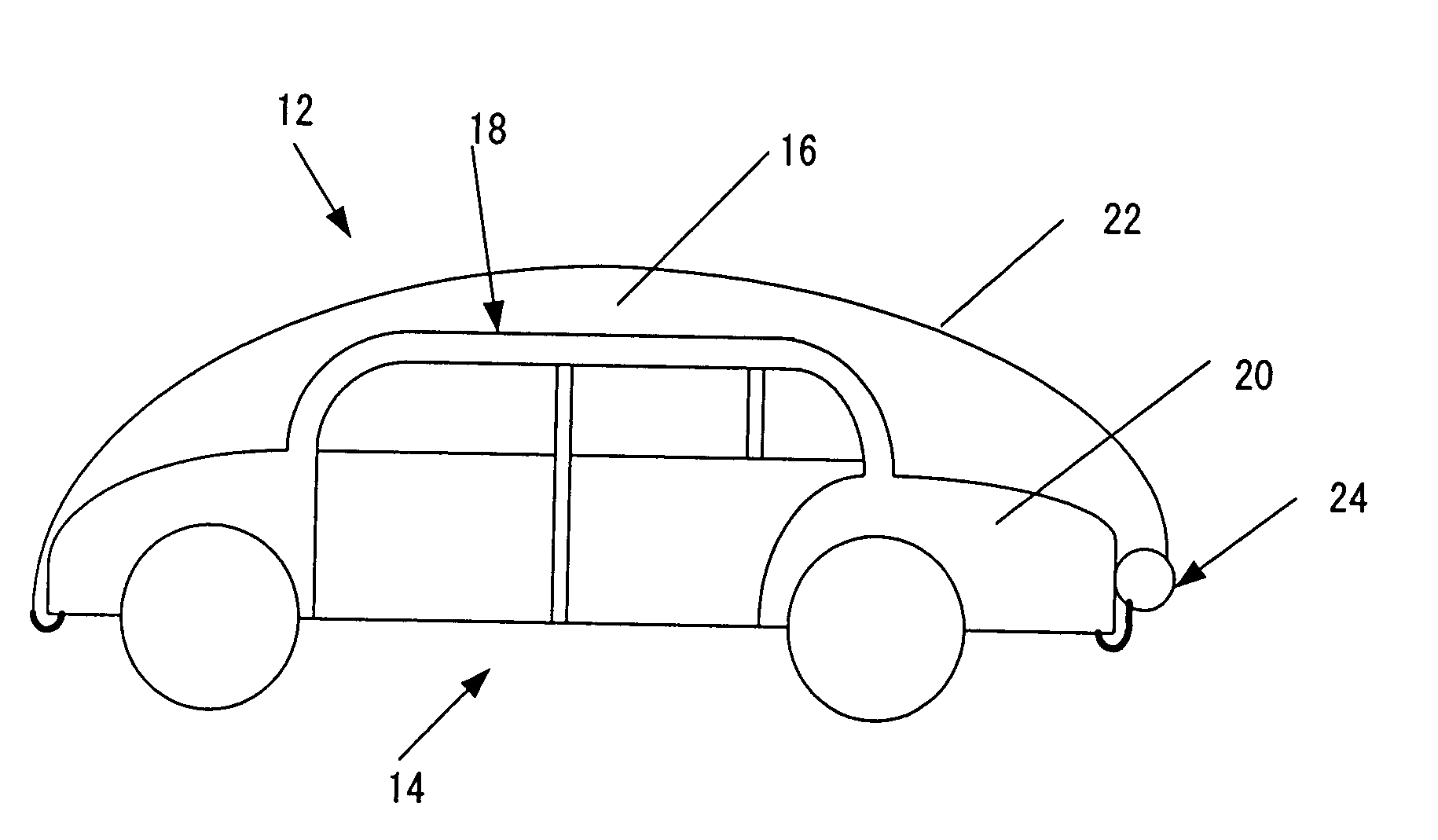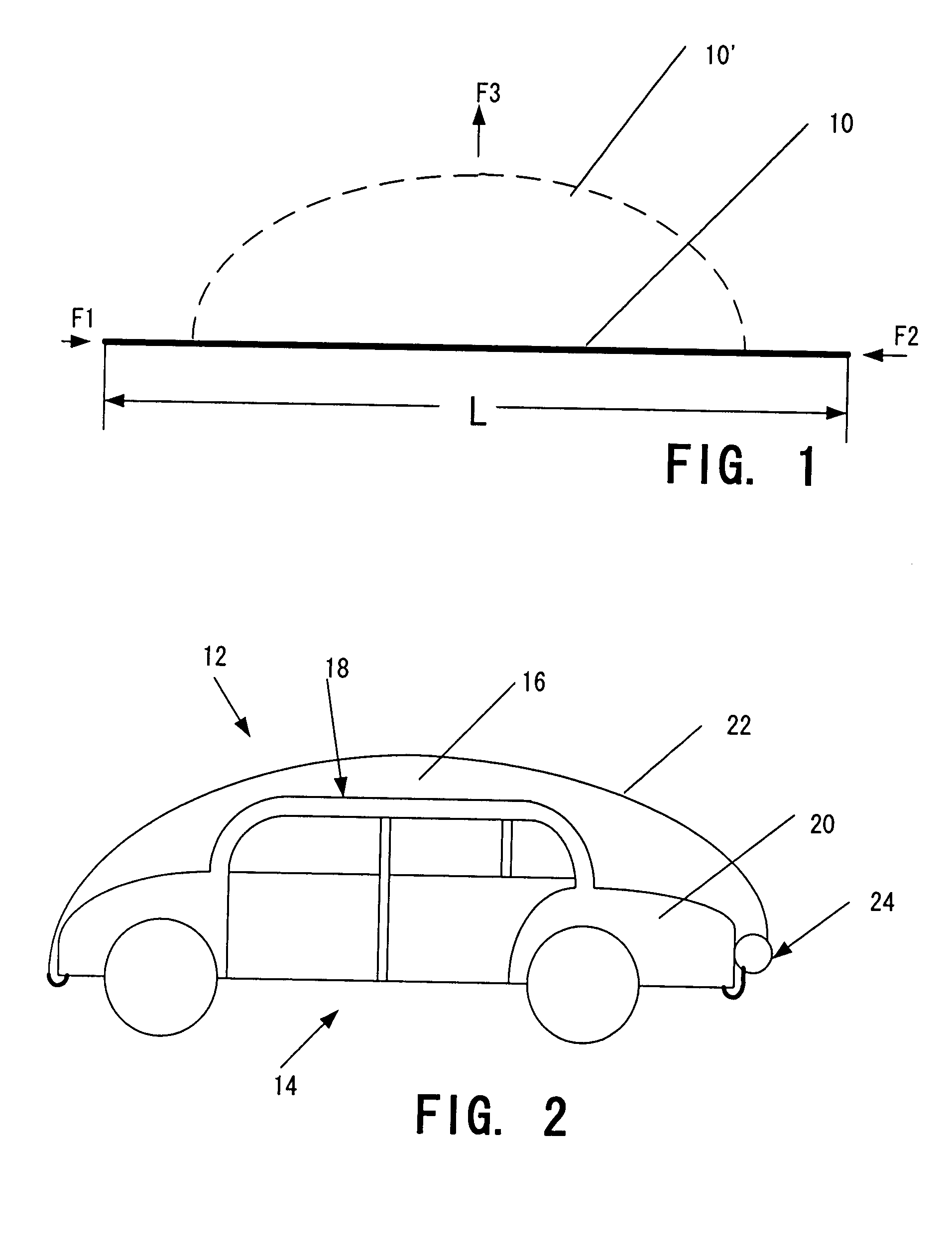Protective cover for a vehicle
a protective cover and vehicle technology, applied in the field of canopy type vehicle covers, can solve the problems of damage irreversible, device construction complicated, automobile surface finish degradation, etc., and achieve the effects of convenient use, low manufacturing cost, and simple construction
- Summary
- Abstract
- Description
- Claims
- Application Information
AI Technical Summary
Benefits of technology
Problems solved by technology
Method used
Image
Examples
Embodiment Construction
[0023]FIG. 1 is a schematic view illustrating the principle of the invention. In its simplest form, a device of the invention comprises a sheet 10 of a flexible material that possess some longitudinal rigidity, preferably to the extent sufficient for the sheet to resist sagging under the effect of gravity. The sheet 10 can be made, e.g., of a plastic, e.g., such as polypropylene, polyvinylchloride, etc., having a thickness, e.g., within the range of 0.1 mm to 10 mm. What is meant under the term “flexible material” is that when two opposite forces F1 and F2 sufficient to overcome longitudinal rigidity of the flexible sheet 10 are applied to the opposite edges of the sheet, the latter is buckled or curved upward and assumes the shape shown by a broken line 10′ in FIG. 1 under the effect of a resulting bending force F3 acting in the direction of arrow V shown in FIG. 1.
[0024]The sheet 10 can be prestressed so that in a free state it will automatically assume, under the effect of intern...
PUM
 Login to View More
Login to View More Abstract
Description
Claims
Application Information
 Login to View More
Login to View More - R&D
- Intellectual Property
- Life Sciences
- Materials
- Tech Scout
- Unparalleled Data Quality
- Higher Quality Content
- 60% Fewer Hallucinations
Browse by: Latest US Patents, China's latest patents, Technical Efficacy Thesaurus, Application Domain, Technology Topic, Popular Technical Reports.
© 2025 PatSnap. All rights reserved.Legal|Privacy policy|Modern Slavery Act Transparency Statement|Sitemap|About US| Contact US: help@patsnap.com



